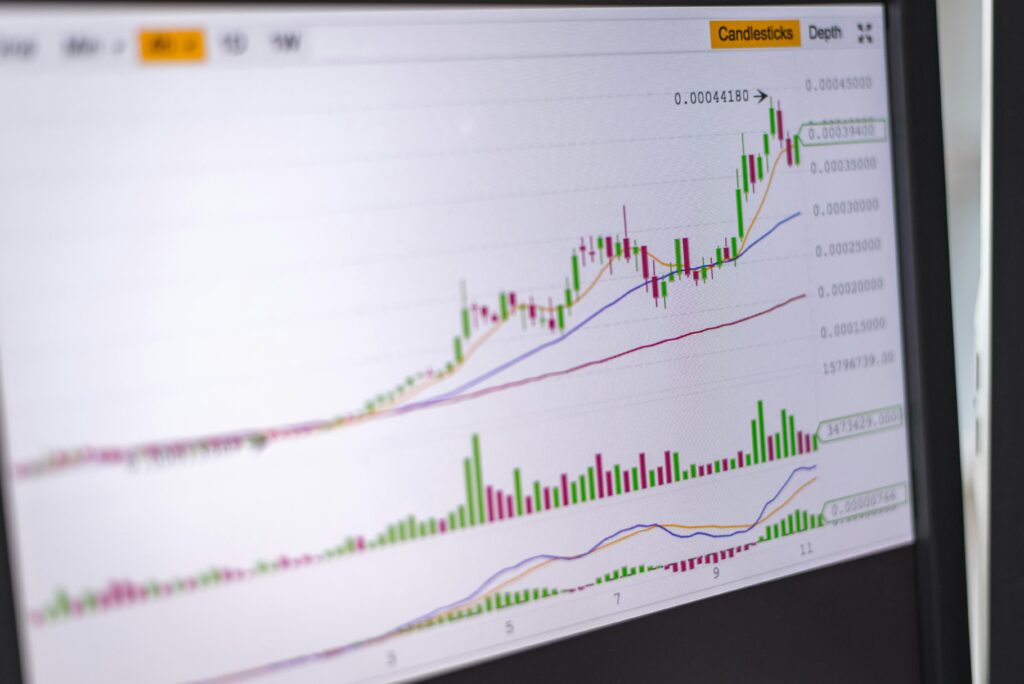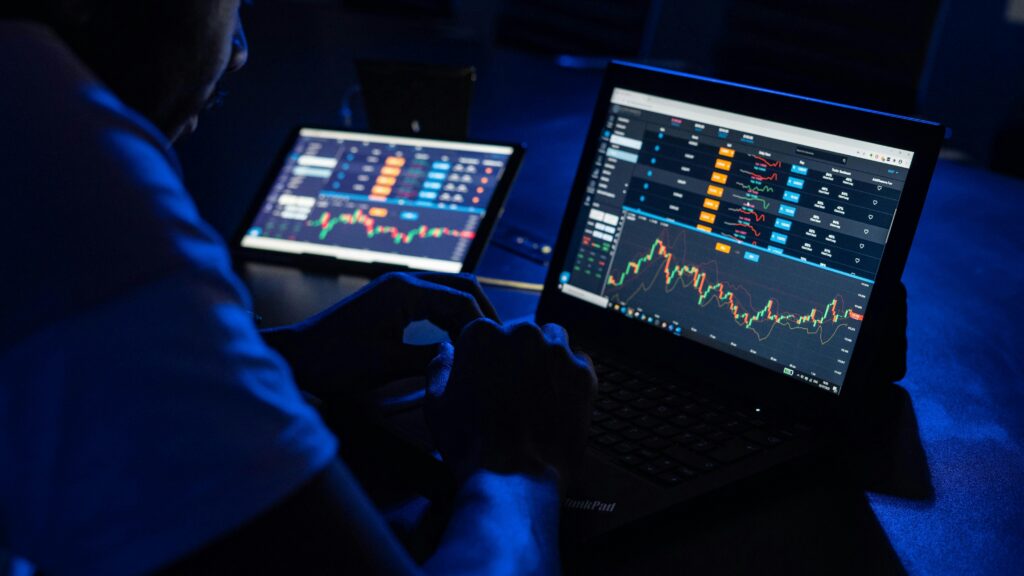In forex trading, having a sound risk management strategy is essential for long-term success, particularly in the face of unpredictable market fluctuations in 2024. By employing advanced forex risk management techniques, traders can minimize potential losses while optimizing profits. This guide will explore effective strategies, from position sizing to the role of psychological discipline, so you can confidently navigate the fast-paced world of forex trading.

The Importance of Risk Management in Forex Trading
In forex, a lack of risk management can lead to significant financial losses, especially when leverage is involved. Advanced forex risk management techniques help traders set clear boundaries for each trade, reducing the likelihood of devastating losses. Without these techniques, even seasoned traders are vulnerable to the rapid market shifts common in the forex market.
Position Sizing as a Risk Management Technique
One of the most effective advanced forex risk management techniques is position sizing. This involves controlling the amount invested per trade relative to the account balance, ensuring that no single trade results in excessive losses. For instance, many traders set a cap of 1-2% of their account balance per trade. This way, if a trade goes wrong, the impact on the overall account balance remains limited.
To determine position size accurately, traders can use formulas based on their risk tolerance, such as the Fixed Fractional Method, which involves investing a fixed percentage per trade, or the Kelly Criterion, designed to maximize growth while managing risk.
Using Hedging to Balance Risk
Hedging is a popular technique to protect trades against unexpected currency movements, allowing traders to offset potential losses by holding positions in correlated currency pairs. With direct hedging, for instance, traders might hold a long and a short position on the same currency pair, protecting against large swings in either direction. Another approach is correlated hedging, where traders invest in pairs that typically move inversely, balancing the effects of market fluctuations.
By incorporating hedging, traders effectively create a buffer against losses, one of the most robust advanced forex risk management techniques available today.
Advanced Stop Loss Strategies

Stop losses are a foundational risk management tool, but there are advanced strategies beyond the simple stop order. Trailing stops, for example, automatically adjust as the trade moves in a favorable direction, locking in profits while minimizing loss exposure. Time-based stops are another option, which exit trades after a specific duration, helping avoid overexposure and maintain disciplined trading habits.
These advanced stop loss strategies allow traders to manage their trades actively, adapting to market changes without the need for constant monitoring. Implementing these strategies can significantly impact a trader’s success and security in volatile markets.
Implementing Risk-Reward Ratios in Trades
Every trader should use a risk-reward ratio to establish the balance between potential risk and potential profit on any given trade. Many experts recommend a risk-reward ratio of 1:2, which means that the potential gain is twice the potential loss. Ratios of 1:3 are also common among experienced traders using advanced forex risk management techniques, as these provide even better profit margins for successful trades.
By maintaining favorable risk-reward ratios, traders can sustain profitability even if only a fraction of trades are successful, adding resilience to their trading approach.
Diversification within Forex Trading
Diversification, commonly associated with stock trading, can also apply to forex. By trading multiple currency pairs, a trader’s risk is spread out, reducing the potential impact of a single currency’s volatility. For example, a trader with positions in both EUR/USD and GBP/JPY is less exposed to the U.S. dollar alone, mitigating the risk posed by any single currency’s movements.
Advanced forex risk management techniques recommend spreading trades across pairs with low or negative correlations. This approach decreases exposure to any one currency or economic event, allowing for a more balanced portfolio.
Psychological Discipline in Risk Management
Emotions play a huge role in forex trading. Even with the best advanced forex risk management techniques, a lack of discipline can derail a strategy. Common emotional pitfalls include panic-driven decisions or overconfidence, both of which can lead to excessive risk-taking. To maintain discipline, traders should set clear rules for trade entry and exit points, regardless of emotional impulses.
Tools like journaling trades or using automated systems can help enforce consistency and accountability, even under stressful trading conditions.
Using Volatility Indicators for Risk Control

Volatility indicators such as the Average True Range (ATR) gauge market volatility, allowing traders to adjust their strategies to the level of risk. A higher ATR suggests increased market movement, prompting traders to tighten stop-losses or reduce position sizes. Bollinger Bands are another popular indicator, reflecting market volatility by widening or narrowing based on price fluctuations.
Integrating these indicators into an overall risk management approach is a critical component of advanced techniques. They allow traders to make informed, real-time decisions while remaining adaptable to changing market conditions.
Advanced Forex Risk Management Techniques for Secure Trading
Types of Risk Management in Trading
Various types of risk management in trading help protect against unpredictable market shifts. These include position sizing, which limits the amount invested per trade; stop-loss orders, which automatically exit trades at set loss levels; and diversification, which spreads investments across different assets to reduce single-market exposure. Using advanced forex risk management techniques, traders can blend these types to suit their specific risk tolerance.
Risk Management Strategies in Trading
Strategies like setting risk-reward ratios, using trailing stops, and implementing time-based exits provide a structured approach to managing trades effectively. Each strategy helps minimize losses and control exposure, even during volatile market periods. Advanced forex risk management techniques also encourage combining these strategies for optimal protection.
Investors’ Risk Management
Investors manage risk by using strategies tailored to longer investment horizons, such as portfolio diversification and fixed allocation. They also regularly review asset performance to adjust based on market trends. Applying advanced forex risk management techniques within investing can further refine these practices, particularly for those involved in high-risk assets like forex.
Forex Risk Management Strategies
Forex-specific risk management strategies include utilizing stop-loss orders, hedging currency pairs, and adjusting position sizes based on volatility indicators. With advanced forex risk management techniques, forex traders can mitigate risks associated with leverage and rapid currency movements, enhancing both short- and long-term profitability.
Trading Risk Management Calculator
Risk management calculators help traders estimate potential losses by factoring in variables like leverage, position size, and account balance. Using a calculator can be one of the essential advanced forex risk management techniques for traders aiming to make data-driven decisions, as it provides precise figures on trade risk before entering positions.
Conclusion
In 2024, advanced forex risk management techniques are vital to any trader’s strategy. By focusing on position sizing, hedging, stop-loss strategies, risk-reward ratios, and diversification, traders can approach the forex market with greater confidence. Psychological discipline and the use of volatility indicators further enhance their ability to make informed decisions, allowing for a more resilient trading portfolio. Implementing these advanced techniques can pave the way for success in the forex market, regardless of economic conditions.
Top 3 FAQs on Advanced Forex Risk Management Techniques
1. Is it possible to trade forex without any risk?
While risk can be minimized through advanced techniques, forex trading always involves risk due to its speculative nature. Effective management strategies only reduce, but cannot eliminate, potential losses
2. What is the best risk management technique for beginners?
Position sizing and stop-loss orders are fundamental for beginners as they limit losses and keep exposure manageable. Advanced techniques like hedging may be more suitable for experienced traders.
3. How can I stay disciplined while trading forex?
Setting clear rules, using automated trading tools, and maintaining a trading journal are effective ways to stay disciplined and reduce emotional influence on trades